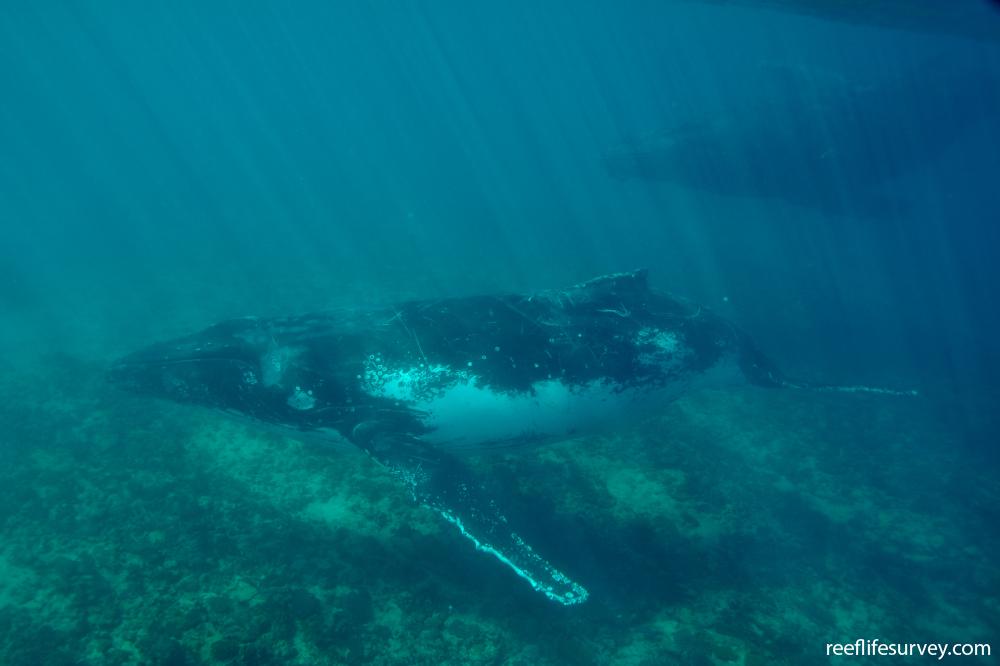Megaptera novaeangliae
humpback whaleDistribution
Polar - northern, Polar - southern, Temperate Africa, Temperate Australasia, Temperate South America, Temperate northern Atlantic, Temperate northern Pacific, Tropical Atlantic/Caribbean, Tropical Eastern Pacific, Tropical Indo-Pacific
Description
Broad head with a series of knobs on top, extremely long white flippers, small dorsal fin, tail with scalloped rather than smooth rear edge. Distinctive behaviour with high leaps, often mid-air rolls, then crashing back into the water on back. Feed in Antarctica during spring, summer and autumn months, then migrate to subtropical and tropical grounds for winter calving, a period when they do not feed. Humpback whales communicate using complex songs, which can travel hundreds of kilometres underwater.
Information
Max Size: 1800 cm
Sea Temperature Range: 16.1-28.3°C
Depth: 0-200m
Habitat Generalization Index: N/A
Also referred to as the SGI (Species Generalisation Index), this describes the habitat niche breadth of the species. Species with values less than 15 are found in a relatively narrow range of reef habitat types (specialists), while those over 25 may be found on most hard substrates within their range (generalists). Learn more here.
Conservation and Rarity
IUCN Status: Least Concern
Occurrence: Rare (0.2% of sites)
Occurrence describes how often the species is found on surveys within its distribution. It is calculated as the % of reef sites surveyed by RLS divers across all the ecoregions in which the species has been observed
Abundance: Few (2 per transect)
Abundance is calculated as the average number of individuals recorded per RLS transect, where present.
Edit by: GJ Edgar. 2008. Australian Marine Life. New Holland, Sydney



